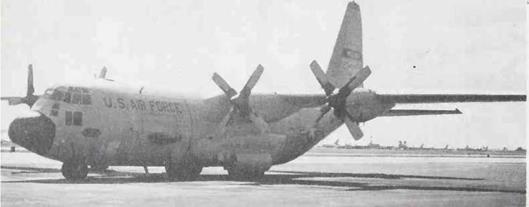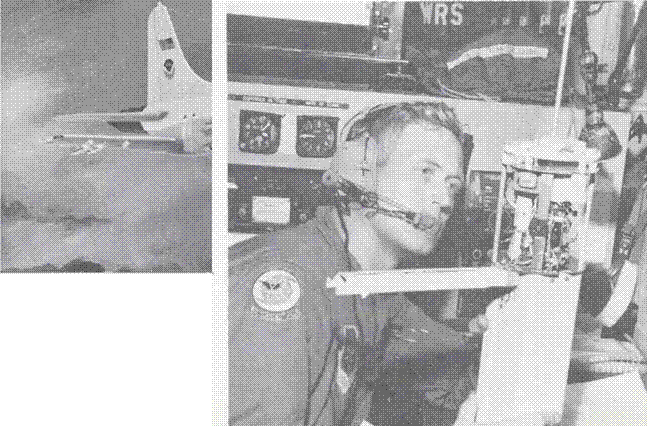WEATHER RECONNAISSANCE
In the Atlantic Ocean, the job of flying into the most violent weather in the world is assigned to flying weathermen of the U. S. Air Force. These men are known as hurricane hunters. They fly Lockheed WC-130 Hercules aircraft.
The WC-130 shown in the photograph is on the ground at Ramey Air Force Base in Puerto Rico. The aircraft is a four-engine turboprop that can cruise at 350 miles per hour. The “W” denotes that it has been weather modified. This means that it is packed with special weather instruments.

Data for altitudes below the flight level are obtained by an instrument called a dropsonde, which is a collection of weather-sensing instruments in a small case. The dropsonde being prepared in the lower photo opposite will be dropped from the WC-130 by parachute. The instrument readings are radioed back to the aircraft by a small transmitter in the dropsonde.

The WP-3D Orion shown above is a weather plane operated by the National Oceanic and Atmospheric Administration. Special weather-radar units are housed in its nose, in the large black blister below the fuselage, and in the tail. The WP-3D operates effectively from sea level to
30,0 feet. It can loiter at speeds between 200 and 260 miles per hour. Top speed for the WP-3D is about 460 miles per hour.










